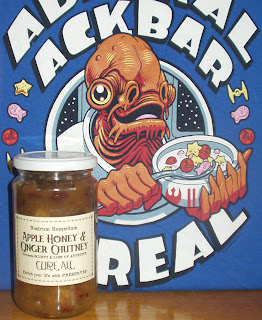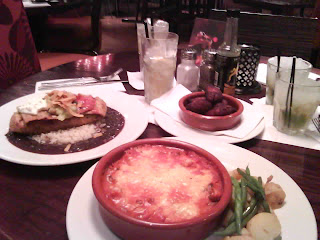Fruit cheese isn't the easiest thing to make, but it is very satisfying. And you can still make it if you don't have quince or guava available (my quince tree produced 4 fruits this year, so it'll be a couple more years before I'm making my own membrillo). Damsons, plums, pears & apples (especially when combined with blueberries or cranberries) all make delicious cheeses too.
Since the cheese will set firm, you can use it in a variety of ways. The simplest is to pour it into heatproof containers, shallow trays, moulds or ramekins & leave to set. Get creative with your moulds, as long as it's heatproof, and you brush it with vegetable oil or glycerine to stop things from sticking, pretty much anything will work. I like to use soap moulds (they come in lovely shapes & are a nice size too), loaf tins & even ravioli moulds (which make adorable little fruit pastilles)
But before I get to the recipe, a few things to warn you about.
This is a recipe that you can't wander off & leave to it's own devices for half an hour. It'll burn the minute your back is turned. It will also spit like Chantico* on a bad day, so wear long sleeves or wrap your arm with a tea towel for the last half hour of cooking. And for the love of all things good get the longest wooden spoon you can. And tie it to the end of a broom or something. 'Luckily' I have a long history of self-harm, feral cats & weeding without gloves on, so am fairly impervious to burns, boils, cuts and furry things gnawing at me, but I don't encourage others to try it. Be careful, and put a dab of lavender oil on any burns. Okay, health warning over!

Plum Cheese
1kg plums
500g-700g sugar
Place the plums, skin, stones & all in a large pan. Just cover with water & bring to a simmer. Cook until soft & mushy. Leave to cool. Rub the plum mush through a nylon sieve (or a mooli if you're fancypants enough to have one). Weigh the pulp & return it to the pan, adding an equal amount of sugar (it will look like instant diabetes, but trust me, it'll be fine). Bring slowly to the boil, stirring until the sugar has dissolved. Simmer for an hour or more, maybe even 2 hours depending on how juicy the plums were, until the mixture is thick & glossy. And when I say thick, I mean seriously thick. There will be a moment of yeah, that's pretty thick, and then it will suddenly be thick. You'll not only be able to scrape the spoon across the bottom of the pan & leave a line, it'll take a few seconds for the mix to realise what's happened, and then slump back together. Scrape into whatever vessels you're using (and make sure they're heatproof. This stuff will melt thin plastic & clingfilm) & either cover with greaseproof paper, or if you're feeling fancy, spoon into greased moulds & top with food grade paraffin wax. The cheese will keep for a year (it's mostly sugar after all)
As for what to do with it, well the world is your fried mock oyster. You can serve it in slices with cheese, cut into cubes, or if you have teeny tiny cookie cutters cut it into pretty shapes & roll in sugar to make fruit pastilles. You can chop into chunks & add to tagines, bread & butter pudding, fruit crumble or rice pudding too.
*What do you mean who? Chantico is the Aztec goddess of fires & volcanoes. She has a bit of a temper.














